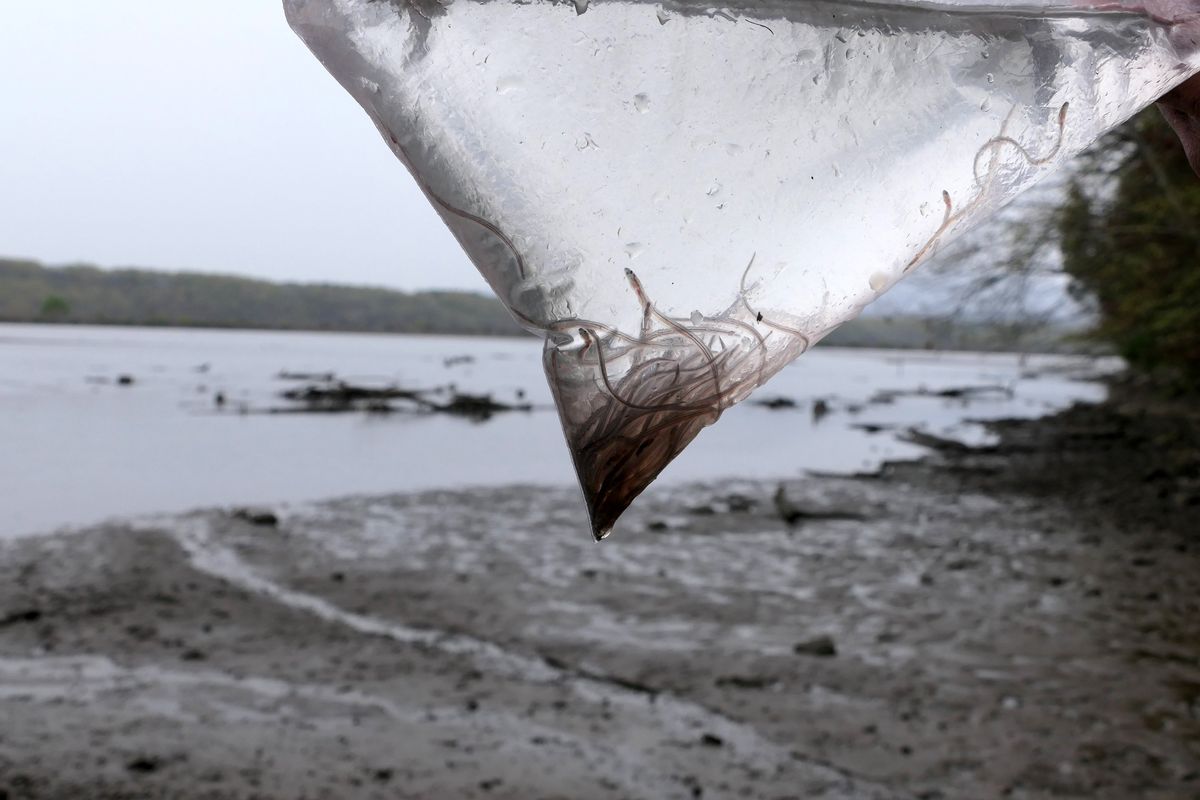Giving endangered American eels a hand

On a misty-gray afternoon in May, four people wade into the Hudson River. They have come to check a large fyke net that catches small creatures. It looks like an open tent with a big tunnel attached to one end.
It is migration season for American eels (Anguilla rostrata). This net, and 13 others up and down the 315-mile river, are snaring young “glass” eels so that Sarah Mount and college and high school volunteers can count them. “Our goal is not to catch every single eel,” said Mount, the coordinator of the Hudson River Eel Project, which is run by the New York State Department of Environmental Conservation. “It’s to count populations over time.”
Counting eels has helped scientists learn that American eel populations are increasing. The Hudson River nets caught an average of 17 eels a day in 2008. In 2020, they caught an average of 504. This is great news for these mysterious nocturnal animals, which are listed as endangered by the International Union for the Conservation of Nature, partly because of habitat loss and the effects of pollution.
“We still have a long way to go before we reach historic levels,” Mount said. But thanks to habitat restoration and other work, “we’re moving in a positive direction.”
There are 19 freshwater eel species, and they all start their lives in the Sargasso Sea off the coast of North America and the Bermuda islands. A female eel spawns in lush sargassum, a type of seaweed. Her millions of larvae are pulled out to sea by strong ocean currents and head north (American eels), east (European eels), or west (Japanese eels), for example. American eels are North America’s only species of catadromous fish. That is, they live in freshwater and return to saltwater to spawn.
By the time baby eels reach the mouth of New York’s Hudson River, or Maryland’s Chesapeake Bay, or the Mississippi River in Louisiana, they’ve been in the water for a year. They are 2 inches long, translucent and extremely strong and wiry. They next develop into elvers, then yellow eels. Finally, about age 20, they mature into four-foot silver eels.
By now they have swum to the muddy bottoms of the streams that have become their longtime homes. Males will die there. Females, which live longer than males, travel more than 1,000 miles back to the Sargasso Sea. They spawn, then die.
Back on the Hudson, Mount and her volunteers open the bottom of the fyke net’s tunnel and gently scoop out eels. They place them in a bucket and count them: 74 glass eels today. The volunteers weigh the eels and place them in a sealable plastic bag full of water. They give the eels a lift upstream, bypassing hungry fish and a waterfall that would take a lot of effort to climb. Although, Mount said, “eels are a really resilient species. They can swim out on land to get around barriers, as long as their skin is wet.”
Mount hopes that resilience will keep eel numbers growing in coming years. And that her work with the eel counters will help scientists solve many of the eel mysteries that remain, such as their migration routes, how they spend their days and where in the Sargasso they spawn. “They have very complex life cycles,” Mount said. And there is so much more to learn about them and about how to keep the species from disappearing.